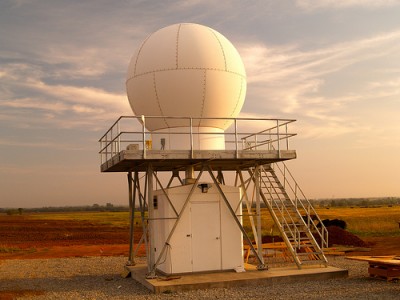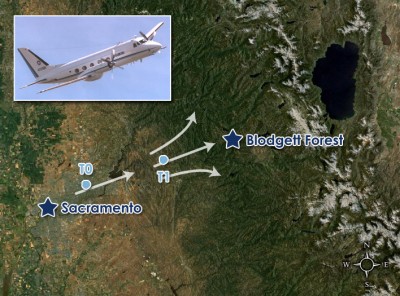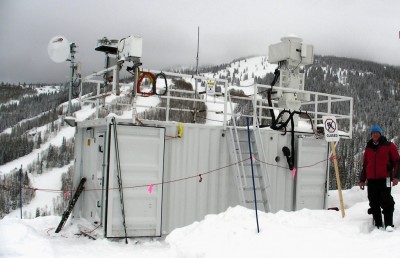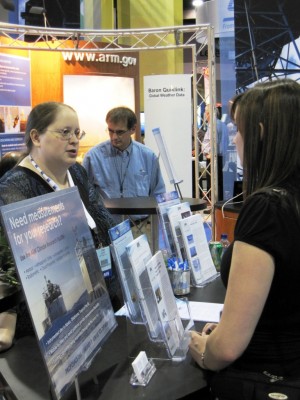Scientists from around the world use data from the U.S. Department of Energy’s Atmospheric Radiation Measurement (ARM) Climate Research Facility to study the interactions between clouds, aerosol, and radiation. At this year’s American Geophysical Union (AGU) Fall Meeting, ARM’s scientific users are presenting dozens of oral and poster sessions describing their research using data from the user facility.
Scanning Radars Revolutionize Cloud Science
In this invited presentation, Dr. Warren Wiscombe from NASA’s Goddard Space Flight Center describes the impacts for climate science from the dense array of new scanning cloud radars being deployed by the ARM Climate Research Facility at its sites around the world. “…the new systems should allow cloud systems to be understood as 4D coherent entities rather than dimensionally crippled 2D or 3D entities such as observed by satellites and zenith-pointing radars.”
- New Cloud Science from New ARM Cloud Radar Systems (A12D-07)
- Monday, December 13, 11:50am-12:05pm – Moscone West 3006
Sacramento Valley Study Focuses on Aerosol Aging and Chemistry 
Numerous researchers present the first preliminary results from the Carbonaceous Aerosol and Radiative Effects Study. In June 2010, scientists used two instrumented ground sites and a Gulfstream-1 aircraft to obtain measurements of cloud and aerosol evolution from the Sacramento valley urban plume. Data from this campaign will fill significant gaps and uncertainties in process-level understanding about (1) secondary organic aerosol formation, (2) black carbon mixing state evolution, and (3) the optical and hygroscopic properties of fresh and aged carbonaceous aerosols.
- Climate Change, Air Quality, and Their Interrelations – North American West Coast II (A31I)
- Monday, December 13, 1:40-3:40pm – Moscone West 3002
New Research Capabilities for the Climate Science Community
Expanding on the invited talk by Dr. Wiscombe, this poster by Jimmy Voyles from Pacific Northwest National Laboratory summarizes all the enhancements to the ARM Facility from the American Recovery and Reinvestment Act. The $60 million investment will result in 143 new and upgraded instruments throughout the Facility and increase the growth rate of data by more than 20 percent. These investments will provide the statistical measurements that scientists can use to advance the physical understanding and predictive performance of climate models.
- The ARM Climate Research Facility—New Capabilities and the Expected Impacts on Climate Science and Modeling (A13C-0224)
- Monday, December 13, 1:40-6:00 pm – Moscone South
Breaking News: Storm Peak Lab Cloud Property Validation Experiment – STORMVEX 
In mid-November, scientists started a 5-month field campaign in Steamboat Springs, Colorado, to explore the life cycle of clouds and aerosols in a mountainous environment. Remote sensing instruments located at four different elevations on Mount Werner are now obtaining data about changes in clouds and aerosol properties as they drift over the mountain slopes. Led by Dr. Gerald Mace from the University of Utah, scientists will examine data from the campaign to improve the algorithms used in computer models of Earth’s climate system.
- Dr. Mace is at AGU all week; see Lynne for an interview.
User Facility Exhibit
The ARM Exhibit showcases streaming data from our research sites across the globe and highlights other key features of this scientific user facility. Visit the display to learn more about the facility and the data scientists use for their research. Or pick up the 2010 Annual Report and other materials that describe ARM’s measurement capabilities, data collections, and field campaigns.
- Exhibit Hall, Space 315, Tuesday-Friday

